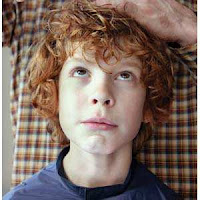 In an era when mobile phones provide Internet access and laser eye surgery restores vision in one visit, it might seem incredulous that a tiny, parasitic bug could cause such havoc. But lice are alive and well and continue to plague school children and their parents.
In an era when mobile phones provide Internet access and laser eye surgery restores vision in one visit, it might seem incredulous that a tiny, parasitic bug could cause such havoc. But lice are alive and well and continue to plague school children and their parents. Lice are very small insects that live in the hair. They feed on blood and reproduce right on the scalp. A louse can live for up to 30 days on a person. Eggs -- called nits -- can survive for two weeks.
Because they spread through close contact with other people, lice are a common concern in the classroom. Students frequently share close proximity with others and may store their coats, hats and other belongings in lockers or cubbies directly next to others. Should one student have lice, the rest of the students are at risk.
A lice infestation is identifiable by a few different symptoms. Initially, visibly identify lice and their eggs. Nits look like dandruff flakes, but do not fall off the hair shaft easily like dandruff. Rather, they are coated with a sticky substance that keeps them on the hair securely. Lice are very small, but can be seen moving on the scalp if one looks closely. They are commonly found around the ears and at the top of the neck where eggs are laid.
Bumps on the scalp, shoulders and neck where lice have bitten can also indicate a problem, as can intense itching of the scalp.
Treatment for lice includes medicated shampoos and lotions designed to kill the live bugs and their eggs. These can be bought over-the-counter. If the OTC shampoos do not work, a doctor can offer a prescription for a stronger medicine. Removal of the nits with a comb is also recommended.
Lice can live off of the scalp for a short period of time. It pays to treat porous fabrics, such as carpeting and upholstery, with sprays designed to kill lice as a precaution. Thoroughly launder linens and clothing of the infected person.
It is important not to send a child to school until lice treatment has been completed. Part of the reason lice are so troublesome is that there is a high chance of reinfestation. BS107647
CAPTION: The back to school season means parents and students must once again be diligent in their lice inspections.
Share on: facebook
No comments:
Post a Comment